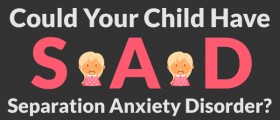
The Tools of Our Voice
When we inhale air, it gets stored in our lungs. Then, during exhalation, when we desire to speak, the air gets pushed out from the lungs, into the larynx, where the vocal cords tighten up, vibrate and produce the desired sounds. Our vocal cords are in a “V” shape and, as we raise our voice pitch or volume, they get tighter and move closer to one another.
However, when we over-strain our vocal cords, these tear and get damaged. In this case, the cords may rub against one another, or stretch too far. If we do not allow our voice rest after such occurrences, small nodules get created on our vocal cords, leading to more serious problems.
What Triggers Hoarseness?
Hoarseness is bound to take place when children overindulge in screaming, cheering, crying or yelling. Also, it happens due to raising or lowering the pitch of the voice excessively, which children tend to do when they mimic the cartoon characters they like. Another cause of hoarseness may be constant coughing or clearing of the throat. Professional singers know that they need to take their singing air from the diaphragm. Usually, when people do not do that, hoarseness affects their voice. Finally, talking loud or talking very fast are all actions which will trigger this phenomenon.
Detection and Treatment
If the child's hoarseness is chronic, there are great chances that nodules have been created on the surface of the vocal cords. Then, parents should take their child to an ear, nose and throat expert who will conduct numerous tests and check the child's medical history.
Once the reasons behind hoarseness are found and diagnosed, proper treatment will be prescribed. This may involve taking medications in order to treat certain underlying conditions, learning how to talk less loudly, how to breathe while talking, how to allow one's vocal cords to rest and stay properly hydrated, as well as avoiding sodas and caffeinated drinks.

















Your thoughts on this
Loading...